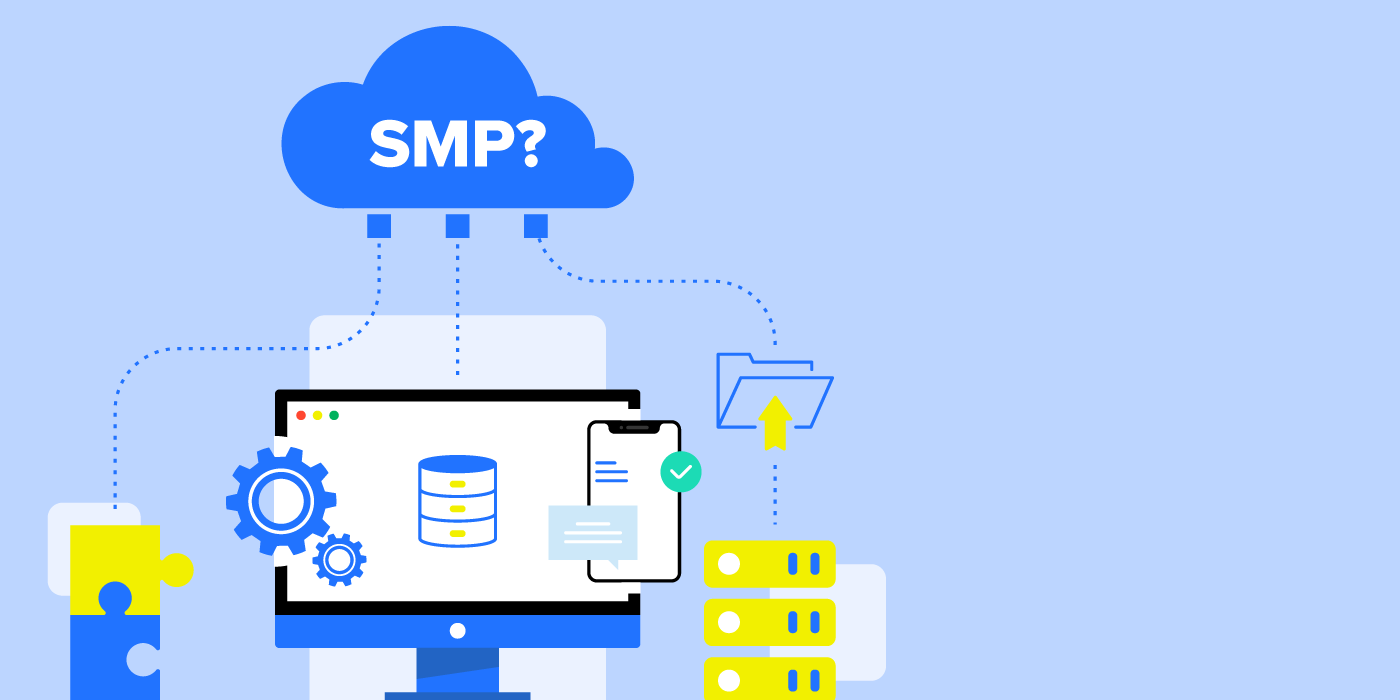What Is a SaaS Management Platform?
6 minute read

Many definitions of this newly emerged technology category have been floating around in recent years. However, as SaaS increasingly becomes the dominant force in how companies use technology, there’s more clarity on what a SaaS management platform is and what it should do in SaaS Operations, or SaaSOps, for short.
Back in 2017, leading analyst firm Gartner first reported on a new category called Cloud Office Management Tools. Then the following year in 2018, they renamed this class of tools to be SaaS Management Platforms (SMPs). And since, Gartner continues to expand the functionality that should be included in this class of tools. So now most agree that a SaaS management platform (SMP) is a standalone tool that can discover, manage, and secure multiple SaaS applications from a central admin dashboard.
So here we build on our recent blog post on SaaS management to fully explore what SaaS management platforms are by covering:
- Why use a SaaS management platform?
- What is a SaaS management platform, and what does it do?
- Important capabilities in a SaaS management platform
- Who needs a SaaS management platform?
- SaaS management platforms for a changing world
Why use a SaaS management platform?
An SMP helps organizations reduce overall costs and risk in the SaaS-powered workplace. It is designed to help businesses optimize SaaS, increase IT efficiency, enhance visibility, and reduce security risk. This is vital because SaaS creates a massive, complex, interconnected data sprawl that grows by the day.
Think of all the data objects in SaaS that reference, interact, control, and/or rely on each other, such as: users, groups, mailboxes, files, folders, records, contacts, calendars, third-party apps, logs, metadata, permissions, devices, etc. These are the building blocks of any and all SaaS apps—the very foundation of SaaS operations.
The building blocks are always growing. They are an expanding app, user, and data universe. And when left unchecked, it leads to challenges around discovering, managing, and securing it all.
With no SaaS management platform, what happens?
IT teams fly blind. Organizations are encumbered with unauthorized SaaS and unknown risk.
With no available SaaS usage insight, there’s no way to identify all apps, much less the redundant or unused SaaS apps that only cost them. Further, it’s nearly impossible to control SaaS spend or consistently manage SaaS apps.
So this brings us to the second problem organizations without an SMP experience: IT can’t manage what they can’t see.
IT teams struggle to manage authorized apps—the ones they do know about—with a mishmash of manual processes within individual SaaS apps. With an average of 80 SaaS apps in use (and growing), this means IT teams are prisoner to individual app admin consoles and spreadsheets. All, of course, operate very differently, offering varying levels of sophistication around visibility and control, making it impossible to standardize IT processes like user offboarding. And any attempt to automate includes maintaining spreadsheets and scripts.
With no visibility into apps, files, groups, and user interactions or management uniformity, there are new problems. Without a SaaS management platform, human error creeps in, reducing IT efficiency while threatening an organization’s security posture because it’s impossible to guarantee data security. No IT team can possibly be agile enough to address threats as they arise. And ultimately both the organization’s productivity and security decline.
SMPs address many challenges in the digital workplace
SMPs help IT teams get a complete understanding of critical SaaS apps, users, and their files. Such actionable insight helps reduce SaaS spend and right-size deployment, save time by centralizing management and automating routine operational tasks, and keep data safe by embedding security best practices. And for good measure, it improves protection for organizations against unauthorized data access, data loss, and data theft.
Ultimately, an SMP helps optimize SaaS spend, increase IT efficiency, grow visibility, and reduce security risk. So when trying to understand what SaaS management platforms are, it’s important to keep these benefits in mind.
Let’s move on to the basics of an SMP.
What is a SaaS management platform, and what does it do?
At its most essential, a SaaS management platform provides a central place to automatically:
- discover SaaS apps in use throughout the organization
- manage users, apps, files, and user interactions with company data
- secure this company data
SaaS management platforms are used for many reasons, and among them are:
Spend reporting: Improve budget allocation with auditable spend reporting across all applications
Spend optimization: Pair usage insights with automated policies to eliminate unused licenses, and with it, the money spent
Least privilege access enforcement: Limit administrator access to settings and controls needed for the individual to do their job
SaaS app management: Ensure user, group, and file settings are correct from the start and remain secure.
File security and compliance: Discover sensitive content stored across SaaS applications and automatically remediate sensitive information oversharing, as well as automatically detect and respond to threats to always comply with laws and standards.
File sharing and data exposure alerts: Identify changes and suspicious behavior to stop data loss or outsider infiltration.
User lifecycle management (on/offboarding and mid-cycle changes): Automate onboard, offboard, and mid-lifecycle user change processes to reduce human error, risk, and save valuable time.
As such, to accomplish these tasks, SaaS management platforms integrate with several other systems. These could be a Cloud Access Security Broker (CASB), identity provider, IT service management tool (ITSM), or a human resources information system (HRIS). They’ll also integrate with cloud productivity apps like Google Workspace and Microsoft 365.
Additionally, SaaS management platform must discover SaaS apps and integrate them for management. To accomplish this, it must be able to constantly ingest large quantities of data, normalize it, and graph all data objects across the SaaS environment.
This process is the foundation of operational context critical to effectively managing and securing applications.
Important capabilities in a SaaS management platform
In turn, this operational context is what powers the benefits of a SaaS management platform. IT enables IT to optimize SaaS spend, increase IT efficiency, grow visibility, and reduce security risk.
So without a powerful engine to continuously process all SaaS-related data objects, many SaaS management platforms will simply fall short of their promise. They simply will be limited in the capabilities they bring to a customer.
So what other capabilities make up a SaaS management platform?
Not all SaaS management platforms are the same in all areas. Here, we cover the basic capabilities that a product should have to maximize benefits of SaaS spend optimization, IT efficiency, improve visibility, and cut risk.
Optimize SaaS spend with these capabilities:
- A single pane of glass showing all apps in the SaaS environment, sanctioned or unsanctioned
- Ability to review, categorize, and label applications
- Multiple application discover methods, like OAuth or expense analysis
- Expanded visibility into users, usage, and permissions
- SaaS app information for more context
Increase IT efficiency with these functions:
- Customizable, sequential-step automation
- Industry standard best practices in pre-built automation templates
- No-code, IT-centric scalable automation
- Ability to leverage context from different applications
- Automation execution notifications and audits
- A large and growing marketplace of pre-built integrations to connect to any SaaS app in use now and in the future
- Easy extensibility to “non-native” or custom applications using an API
Grow visibility by taking advantage of these capabilities:
- Ability to integrate multiple SaaS applications including those containing files like Dropbox or Google Workspace
- Visibility into files across SaaS applications
- Ability to identify file state and exposure
- Advanced sorting and filtering to quickly identify risk and other insights
- Customizable alerts on changes made to file metadata
- Cross-SaaS remediation to notify and adjust file metadata one-off, in bulk, or automated
Reduce security risk with these functions:
- Ability to integrate multiple SaaS applications including those containing files
- Leverage pre-set data identifiers
- Leverage custom data identifiers
- Sensitive data sharing alerts according to security policy
- Ability to take surface level actions
- Scanning for data at rest within SaaS apps
- Granular remediation according to security policy
So now that you know the answer to “What is a SaaS management platform?” and understand its capabilities, let’s move on to the next question. Who benefits most from them?
Most organizations need a SaaS management platform
SaaS management platforms are relevant across all business functions, particularly IT, human resources, finance and legal or departments with sensitive data. They’re also useful across all industry sectors, including fast-growing SaaS companies, as well as established organizations with intellectual property or customer lists to protect.
It’s important to remember that maximizing the value of a SaaS management platform is a journey. Adoption comes in phases. First comes implementation and discovery of the SaaS sprawl. The next stage, once a SaaS management platform is in place, is to automate IT operational processes. Finally, the last stage is to implement more complex, cross-application security policies. And once those are up and running, you should continually audit, improve, and enhance your automations to truly get the most out of the platform.
But if your organization has a digital workplace or is moving towards becoming one, you need a SaaS management platform now. The longer you wait, and SaaS adoption continues unabated, IT and security challenges only mount.
SaaS management platforms for a changing world
When thinking about SaaS management platforms, you need to consider how they accommodate our rapidly changing world. As you start your own journey to understanding more about what a SaaS management platform can do for your organization, it’s important to consider a vendor’s legacy, commitment, and leadership in this space.
Here are some questions you should ask.
How deep are their roots in SaaS and in SaaSOps? Do they have an active community dedicated to all things SaaSOps? As SaaS APIs constantly change, how well does the platform vendor keep up? What’s the depth of automated actions you can take? How well do they support remote users? How large is their marketplace of pre-built integrations where the larger the inventory, the greater the time and cost savings? Is the SaaS management platform constructed to offer deep operational context to automate security alerting that doesn’t add to the already unmanageable alert fatigue?
Once you know what SaaS management platforms are, and get answers to the above questions, you’ll find that only one SaaS management platform vendor stands out amongst the rest.
Meet BetterCloud
BetterCloud is the leading SaaS management platform that enables IT professionals to discover, manage, and secure the growing stack of SaaS applications in the digital workplace. Thousands of customers rely on BetterCloud to enable SaaSOps transformation by automating processes and policies across their cloud application portfolio.
To learn more about how BetterCloud can help you discover, manage, and secure your SaaS environment, request a demo.





